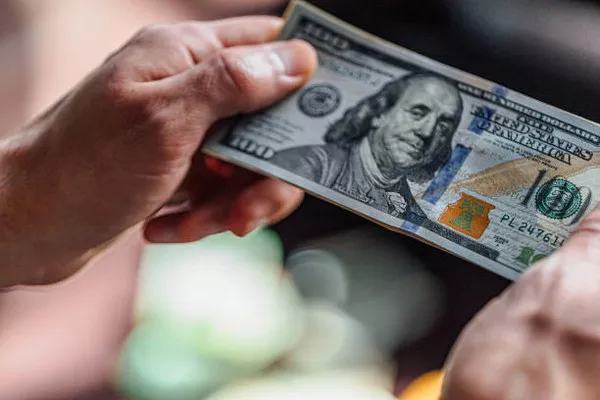The United States dollar (USD) holds a unique position in the global economy, often referred to as the world’s primary reserve currency. Understanding how many US dollars are in circulation provides insight into economic stability, international trade, and monetary policy. This article delves into the intricacies of USD circulation, exploring historical context, current statistics, factors influencing circulation, and the implications for global economics.
Historical Context of the US Dollar
The Rise of the Dollar
The US dollar’s prominence began in the aftermath of World War II when the Bretton Woods Agreement established it as the world’s dominant currency. This agreement tied various currencies to the dollar, which was convertible to gold. The economic strength of the United States at that time laid the groundwork for the dollar’s status.
The End of the Gold Standard
In 1971, President Richard Nixon ended the convertibility of the dollar to gold, transitioning the world to a fiat currency system. This shift allowed the US government to print more money without being constrained by gold reserves, significantly impacting the dollar’s supply and demand.
Understanding Currency in Circulation
Definition of Circulation
Currency in circulation refers to the total amount of physical money—bills and coins—available in the economy. It does not include money held in bank reserves or other forms of deposits. The measure of currency in circulation is crucial for understanding liquidity and economic activity.
Components of the Money Supply
The total money supply is often categorized into several components:
M0: The total of all physical currency, including coins and bills.
M1: M0 plus demand deposits (checking accounts).
M2: M1 plus savings accounts, time deposits, and other near-money assets.
For a comprehensive view of USD circulation, it’s essential to consider these broader categories beyond just physical cash.
Current Statistics on US Dollars in Circulation
The Federal Reserve’s Role
The Federal Reserve, the central bank of the United States, plays a critical role in managing the supply of dollars. It regularly publishes data on the money supply. As of mid-2023, approximately $2.3 trillion in physical US currency was in circulation globally. This figure includes both coins and banknotes.
Breakdown of US Currency
The total amount of US currency can be broken down as follows:
Federal Reserve Notes: The majority of currency in circulation, these are the paper bills issued by the Federal Reserve.
Coins: The US Mint produces various coins, with a smaller overall value compared to paper currency.
Global Demand for US Dollars
The demand for US dollars extends beyond the United States. Many countries hold dollars as part of their foreign reserves, and some nations even use the dollar as their official currency. According to estimates, approximately 60% of the world’s central banks hold their reserves in USD.
Factors Influencing Circulation
Economic Conditions
The economic conditions within the United States directly impact the circulation of the dollar. During periods of economic growth, demand for currency typically increases, while during recessions, the demand may decrease.
Monetary Policy
The Federal Reserve’s monetary policy also plays a significant role. Decisions regarding interest rates, inflation targeting, and open market operations influence the amount of money in circulation. For example, during the COVID-19 pandemic, the Fed adopted an expansionary monetary policy, significantly increasing the money supply to stimulate the economy.
International Trade and Investment
The dollar’s role in international trade affects its circulation. As the primary medium for international transactions, a significant amount of USD is held overseas. This international demand contributes to the dollar’s stability and value.
The Dollar as a Reserve Currency
Importance of the Reserve Currency Status
The status of the US dollar as the world’s primary reserve currency grants the United States certain economic advantages, such as lower borrowing costs and increased foreign investment. Countries hold USD to facilitate trade, manage exchange rate risks, and ensure financial stability.
Countries Using the US Dollar
Several countries use the US dollar as their official currency, including:
- El Salvador
- Panama
- Ecuador
In these nations, the dollar plays a crucial role in daily transactions and overall economic stability.
Implications of USD Circulation
Economic Stability
The amount of US dollars in circulation impacts economic stability both domestically and internationally. A high level of currency circulation can signal economic confidence, while a low level may indicate economic distress.
Inflation and Currency Value
An increase in the money supply without a corresponding increase in goods and services can lead to inflation. Inflation erodes the purchasing power of currency, impacting both consumers and investors. The Federal Reserve closely monitors this balance to maintain economic stability.
Global Trade Dynamics
The widespread use of the US dollar in global trade creates a network effect, reinforcing its dominance. As more countries transact in dollars, the currency’s utility and demand increase, creating a feedback loop that sustains its status.
See Also: How is the Value of the USD Determined?
Conclusion
The US dollar’s position as a global currency is a complex interplay of history, economic principles, and international dynamics. With approximately $2.3 trillion in circulation, the dollar serves as a cornerstone of global finance and trade. Understanding the factors influencing its circulation is essential for comprehending the broader economic landscape. As we look to the future, the dollar’s status will likely be shaped by technological advancements, geopolitical shifts, and evolving economic conditions.


